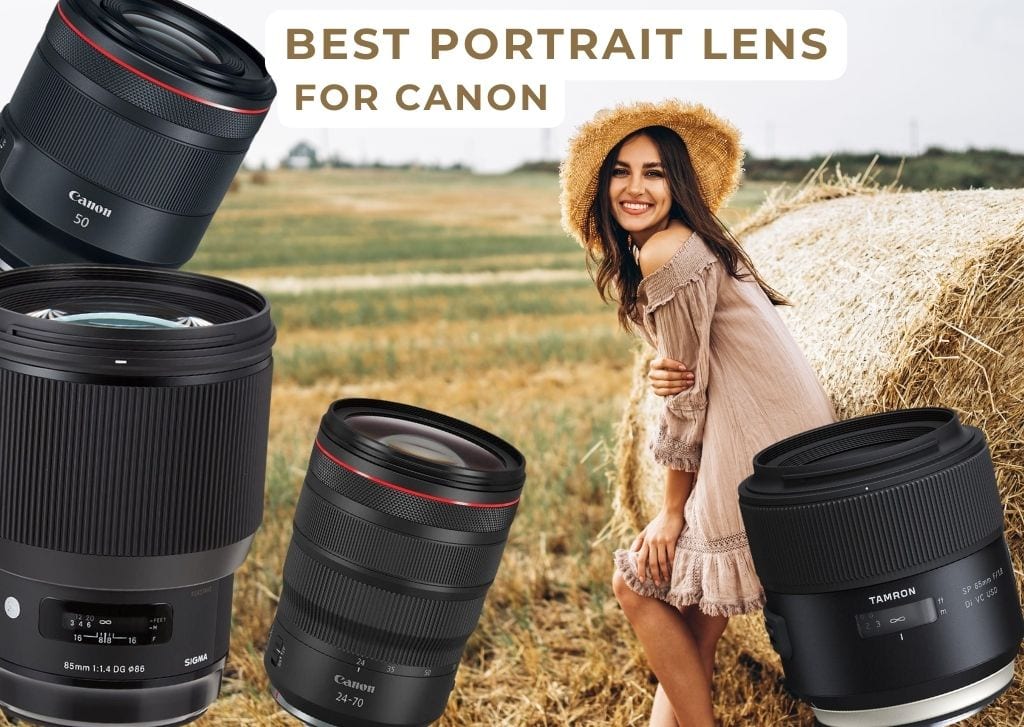Portrait photography is an incredibly powerful genre, expressing who someone is with just the click of the shutter. As such, deciding upon the best Canon lens for portraits is crucial in capturing that image and expressing your style as a Canon shooter. Factors such as focal length, aperture, image quality, and compatibility play a vital role in capturing your subject’s beauty, emotion, and character.
In this portrait lens roundup for Canon photographers, I will provide an overview of the different types of lenses out there, from DSLR to mirrorless. These lenses have been hand-picked based on personal experience and in-depth research as a Canon shooter for over ten years. That way, you’re left with the best options regardless of your camera, skills, or budget, all backed by real experience. Let’s get started!
| Image | Product | Features | Price |
|---|---|---|---|
Best Overall 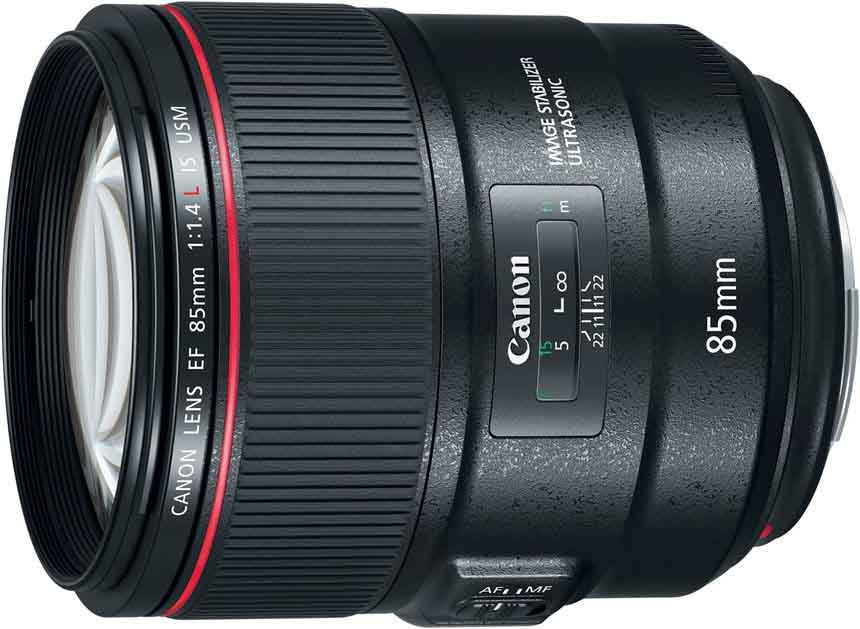 |
| Find On Amazon | |
Best Value 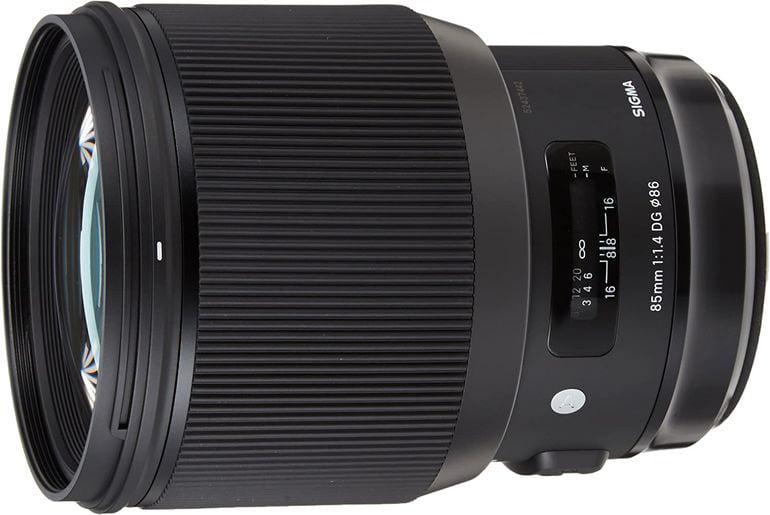 |
| Find On Amazon | |
Best Budget Option 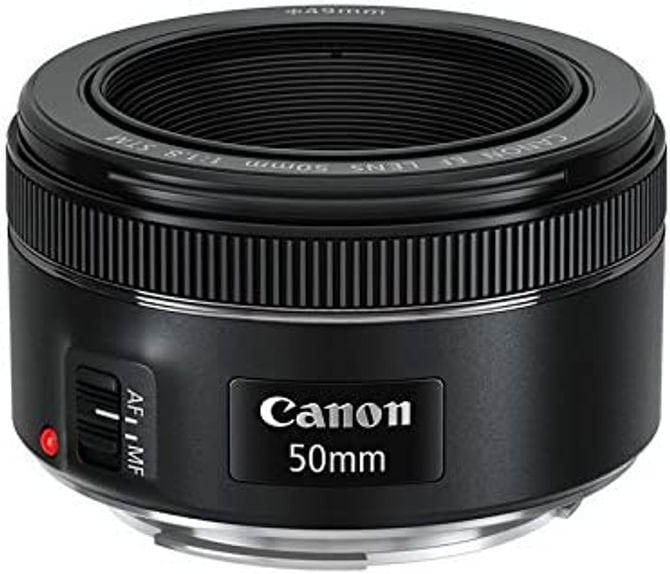 |
| Find On Amazon | |
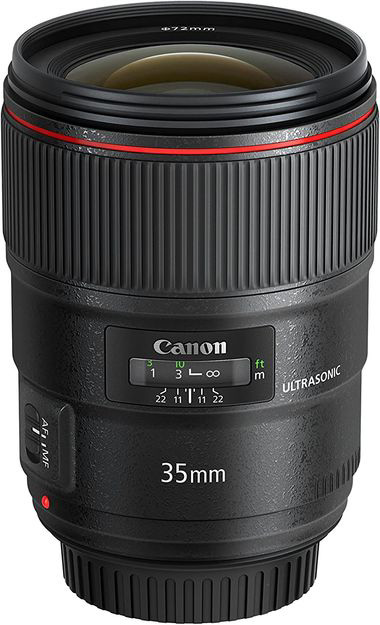 |
| Find On Amazon | |
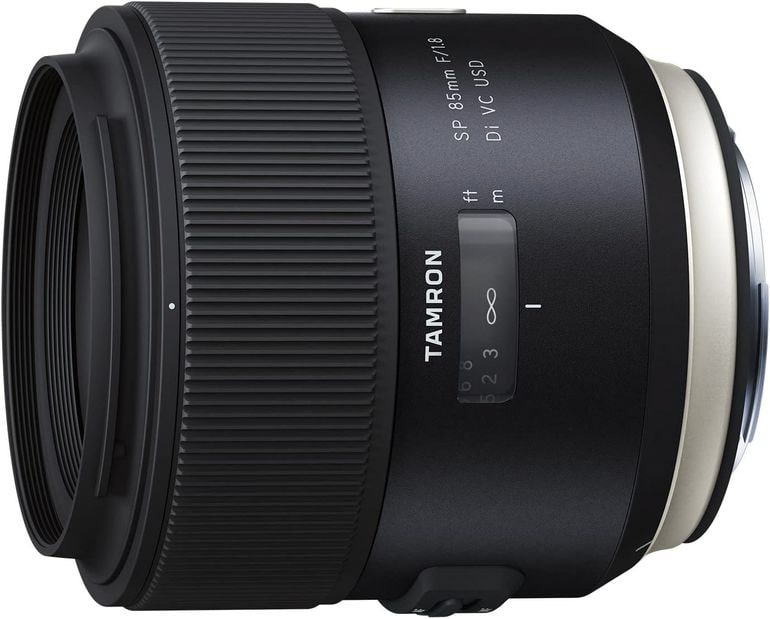 |
| Find On Amazon | |
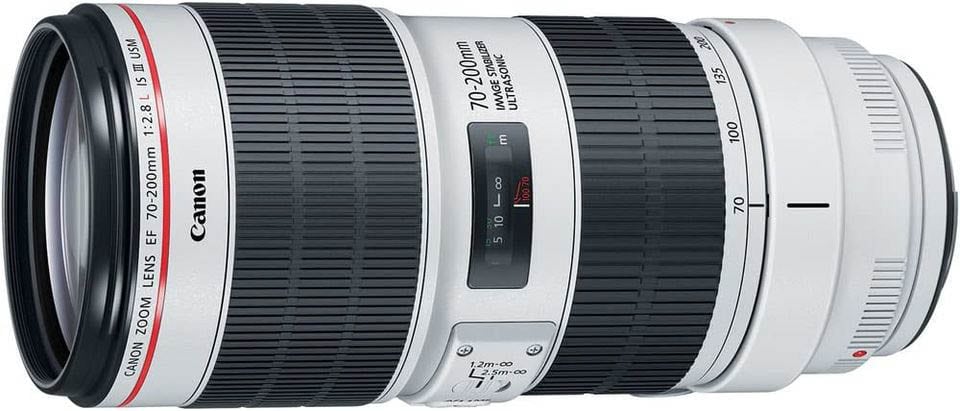 |
| Find On Amazon | |
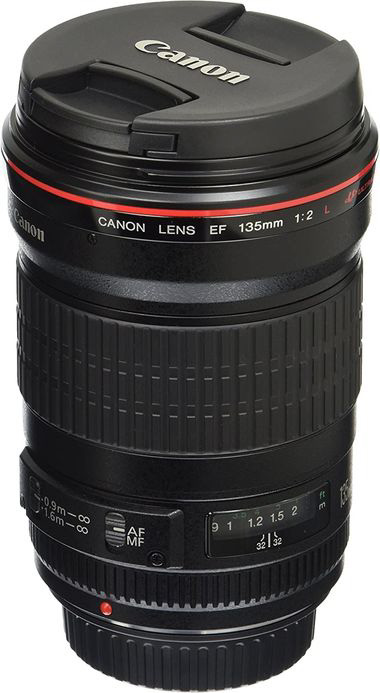 |
| Find On Amazon | |
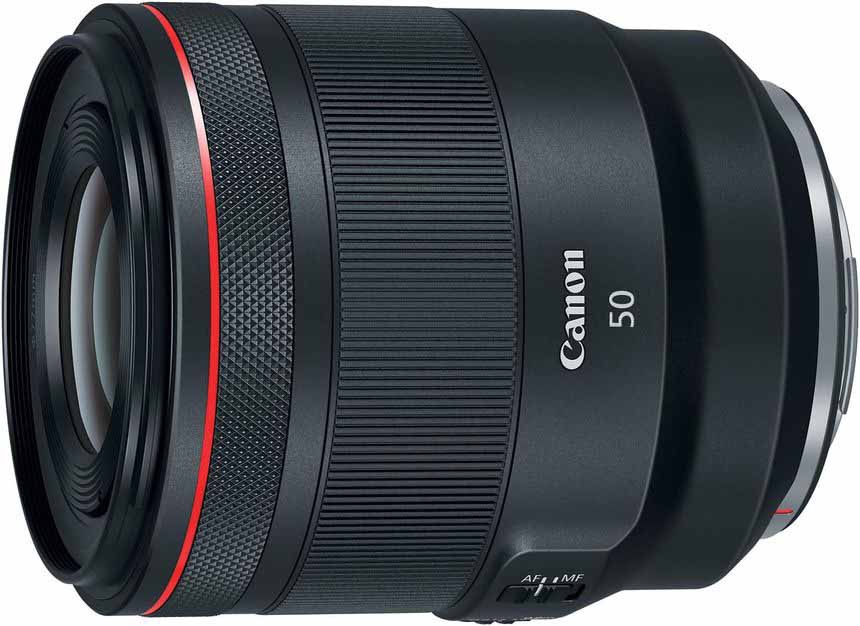 |
| Find On Amazon | |
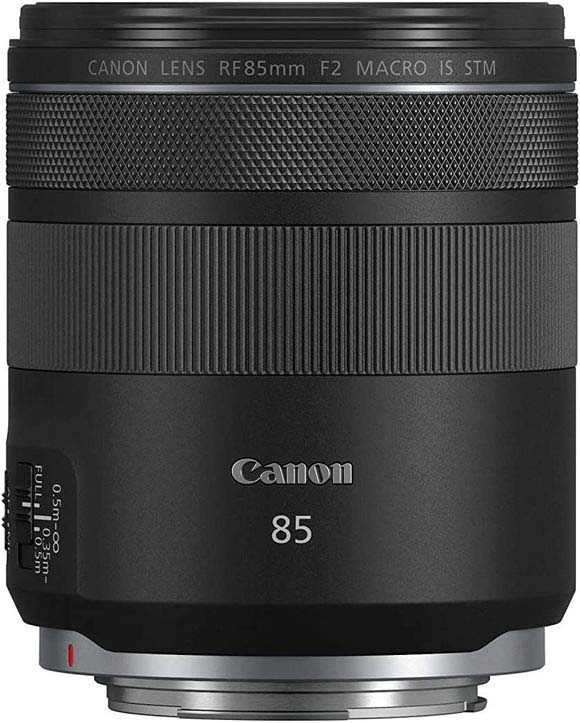 |
| Find On Amazon | |
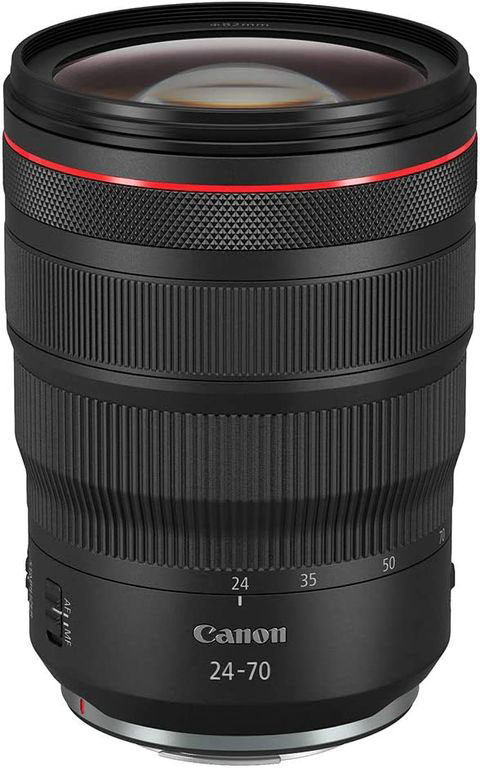 |
| Find On Amazon |
The Best EF Canon Portrait Lenses
1. Canon EF 85mm f/1.4L IS USM
A personal favorite, the Canon EF 85mm f/1.4L IS USM, is a long-standing favorite of portrait photographers. The 85mm focal length is often referred to as a “portrait” length, courtesy of its benefits of optic compression while not being too long of a telephoto lens. This is the shortest telephoto lens that still yields the same benefits, slightly squeezing proportions to slim the subject.
This particular version of the 85mm is profound in several different ways, primarily in carrying the long-standing reputation of Canon’s L (Luxury) line. This sharp lens delivers excellent color and contrast with minimal aberrations and flare. The fast f/1.4 aperture is perfect for achieving a smooth, creamy bokeh behind your subject due to Canon’s patented aperture blade design.
Also remaining true to Canon’s promise, this lens has a durable and weather-sealed build, making it the perfect choice for less-than-ideal shooting locations. Although many portraits tend to happen in a studio setting, some more dynamic ones occur outdoors. However, suppose you are shooting candidly in an indoor space with only ambient light. In that case, the Canon EF 85mm f/1.4L IS USM also features optical image stabilization, making it possible to shoot handheld in low light.
Of course, these advanced features come with trade-offs. The lens is relatively large and heavy, so it may not be the best choice for photographers who need to travel light. Additionally, the high price tag means that it may only be affordable for some.
Reasons To Buy:
- Excellent image quality with sharpness, contrast, and color
- Smooth and creamy bokeh with minimal chromatic aberration
- Fast and silent autofocus with USM motor
- Effective image stabilization with up to four stops of shake correction
- Weather-sealed construction with dust and moisture resistance
Reasons To Avoid:
- Expensive compared to other 85mm lenses
- Heavy and bulky design
- No macro capability
2. SIGMA 85mm f/1.4 DG HSM Art
The SIGMA 85mm f/1.4 DG HSM Art is a more affordable version of the Canon lens above, created by a third-party company. Despite not being name-brand, SIGMA has garnered a reputation for their Art line of lenses as extremely high quality at a much more reasonable price tag.
Featuring many of the same benefits, a big feather in SIGMA’s cap is the dual-pixel CMOS AF compatibility, allowing this lens to communicate fluently with Canon DSLR cameras. It truly feels like a native lens rather than a third party! This is a significant benefit when shooting moving portraits (such as a little boy laughing) as the lens has high-speed and accurate autofocus. The image quality is worthy of note, with sharpness from edge to edge.
This being said, the lens does lack image stabilization, which could make dimly lit photo shoots more difficult. The size is also a limiting factor, as this lens is significantly bulkier than others in the same focal length.
Reasons To Buy:
- Outstanding image quality with sharpness across the frame
- Beautiful bokeh with circular aperture blades
- Fast and accurate autofocus with HSM motor
- Compatible with Sigma USB dock for firmware updates and customization
- Affordable price for an f/1.4 lens
- More affordable than Canon brand 85mm primes
Reasons To Avoid:
- No image stabilization
- Heavy and bulky design
- Prone to flare and ghosting in intense light
3. Canon EF 50mm f/1.8 STM
The “nifty fifty” is likely the most famous focal length of all time, easily adaptable to various subjects. The Canon EF 50mm f/1.8 STM, in particular, is a fantastic choice for the budget and size-conscious photographer, pairing both perks into one lens.
The Canon EF 50mm f/1.8 STM is a very small and discreet lens, able to fit into a purse, let alone a camera bag. The price is also hard to beat, allowing this model to be a great way to dip one’s toes into portrait photography.
Even such, this lens provides excellent value for the price with its fast and quiet autofocus system (working seamlessly with Canon’s dual-pixel CMOS AF technology). The F/1.8 aperture still provides enough of a soft bokeh to keep the shallow depth of field photographer happy.
A big downside to the lens is the lack of image stabilization, which may cause camera shake in low-light or handheld shooting. However, this can be compensated for by using faster shutter speeds or higher ISO – not ideal, but for the price tag, probably worth it.
For those using crop sensor / APS-C cameras, note that a 50mm is equivalent to a 75mm focal length, causing a much narrower field of view. As a result, this lens may not be suitable for tight spaces or environmental portraits and may require more distance from the subject to frame the shot.
Reasons To Buy:
- Great image quality with sharpness, contrast, and color
- Nice bokeh and background blur
- Fast and quiet autofocus with STM motor
- Compact and lightweight design
- Very affordable price for an f/1.8 lens
Reasons To Avoid:
- No image stabilization
- Plastic construction with no weather sealing
- Some chromatic aberration and distortion at wide apertures
4. Canon EF 35mm f/1.4L II USM
For portraits in which the location plays just as significant a role as the subject itself, the 35mm focal length is perfect. Just wide enough to capture the space but not wide enough to suffer from wide-angle distortion, the Canon EF 35mm f/1.4L II USM is an excellent choice. The wider focal length also makes for a tighter minimum focusing distance, allowing photographers to use tight spaces without much compromise.

As a version II, this model improves significantly upon the original. The BR optics eliminate color fringing and improves sharpness, while special coatings help to reduce chromatic aberration and lens flare. Although some photographers enjoy lens flares in portraits, for the most part, this is something to avoid in a high-quality lens.
The ring-type ultrasonic autofocus system is quick, accurate, and quiet, capturing more candid portraits (especially of children). The F/1.4 aperture continues the trend of very smooth bokeh, with this lens featuring nine blades to add extra softness to the result.
The construction is durable and well weather-sealed, with thick gaskets to prevent unwanted elements from entering the sensitive parts of the lens. However, this optic is heavy and bulky compared to others in this focal length. In line with other L lenses, a hefty price tag is attached to the above benefits. With the lack of image stabilization, there is a bit of expectation for more at this cost.
Reasons To Buy:
- Excellent image quality with sharpness, contrast, and color
- Smooth and creamy bokeh with nine aperture blades
- Fast and silent autofocus with USM motor
- Professional L-series optics with weather sealing and fluorine coating
- Versatile focal length for portraits, landscapes, and street photography
Reasons To Avoid:
- Expensive compared to other 35mm lenses
- Heavy and bulky design
- No image stabilization
5. Tamron SP 85mm f/1.8 Di VC USD
Like SIGMA, Tamron is a third-party lens company that has quickly risen to quality optic ranks. Featuring the same native communication with Canon EF mount cameras, it often doesn’t feel like a third-party product is being attached – except for a handful of scenarios. The Tamron SP 85mm f/1.8 Di VC USD is an excellent option in the 85mm realm.
One of the best features of this lens is its affordable price tag, making it an excellent option for entry-level portrait shooters. Including an optical image stabilizer is quite the luxury at the price tag, which sets Tamron apart from other options. The stabilization helps to ensure that your shots are free of motion blur at a few stops slower, even when shooting handheld in low light conditions.
Its high-quality optical design with one LD (low dispersion) element and one XLD (extra low dispersion) element reduces distortion and chromatic aberration, delivering sharp and clear images. The Tamron SP 85mm f/1.8 Di VC USD has a durable and weather-sealed build with a fluorine coating that protects the lens against moisture and dust, making it ideal for outdoor portrait sessions.
However, the F/1.8 aperture is not as wide as other 85mm lenses, losing some shallowness. That being said, the nine aperture blades create a very natural-looking bokeh.
Reasons To Buy:
- Excellent image quality with sharpness, contrast, and color across the frame
- Smooth and circular bokeh with a nine-blade diaphragm
- Fast and accurate autofocus with low-focus breathing
- Effective image stabilization with up to 3.5 stops of shake correction
- Weather-sealed construction for outdoor shooting in harsh conditions
- Compatible with Tamron TAP-in Console for firmware updates and customization
Reasons To Avoid:
- Heavier and bulkier than other 85mm lenses
- No macro capability or close-focusing ability
- May have compatibility issues with some Canon camera bodies or features
6. Canon EF 70-200mm f/2.8L IS III USM
Only one of two zoom lenses on the list, the Canon EF 70-200mm f/2.8L IS III USM, is one of the most famous lenses that Canon has to date. Used for everything from sports and wildlife to weddings and portraits, there is undoubtedly a reason that this 70-200mm lens ends up in so many camera bags.
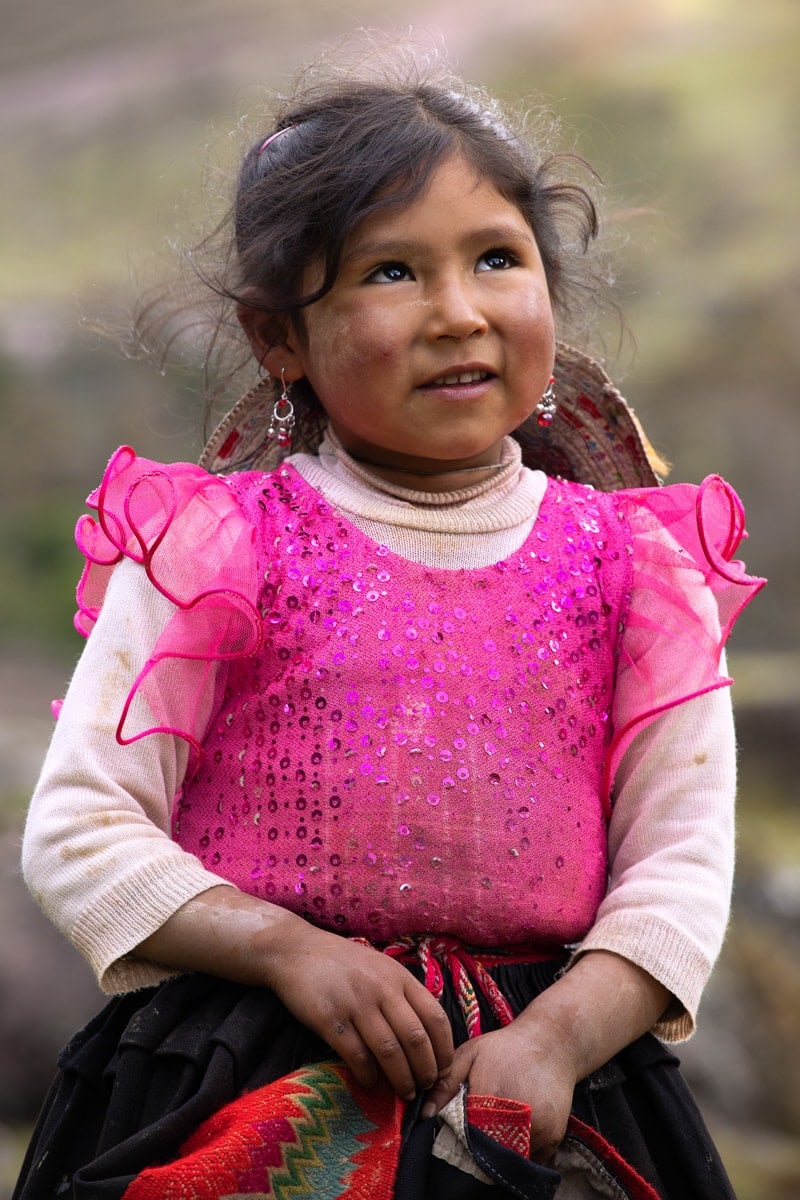
For starters, the telephoto optic compression achieved at anywhere from 70mm to 200mm is great for portrait photography because of its ability to tighten proportions. Although many looking at the photograph may not immediately see the compression, comparison shots to other focal lengths (such as 50mm and 35mm) will show it distinctly.
Many of the benefits of the other lenses on the list, such as superior image quality, fast autofocus, and impressive image stabilization, apply to this lens. The Canon EF 70-200mm f/2.8L IS III USM lens is constructed using only the highest quality materials, making it durable and long-lasting. Its weather-sealed construction means you can use it in various environments, including rain, snow, and dust. The 70-200mm is a workhorse and indeed built like one.
However, like other lenses of this nature, this lens is long, large, and bulky. Although the 70-200mm is one of the smaller zoom telephoto lenses, that does not make it easier to carry around. Equally, the minimum focusing distance is quite long, requiring the photographer to be far from the subject.
Reasons To Buy:
- Excellent image quality with sharpness, contrast, and color
- Smooth and creamy bokeh and background blur
- Fast and silent autofocus with USM motor
- Effective image stabilization with up to 3.5 stops of shake correction
- Professional L-series optics with weather sealing and fluorine coating
Reasons To Avoid:
- Expensive compared to other zoom lenses
- Heavy and bulky design
- No macro capability
- Not ideal for close-up portraits or shooting in tight spaces
7. Canon EF 135mm f/2L USM
As the longest prime lens on the list, the Canon EF 135mm f/2L USM is a solid choice for portrait photographers in some situations. It’s hard to ignore the incredibly high quality of the images this lens can produce, but the long focal length certainly makes it a specialty lens for portraiture.
If the location allows the distance required to focus, the Canon EF 135mm f/2L USM can produce striking results. Exceptional sharpness, color, and contrast across the frame paired with a lot of optic compression equals a beautiful result (especially in fashion photography). This alone could make the lens worthy of one’s investment.
The ring-type USM motor lets you focus quickly and quietly, while the durable and weather-resistant build guarantees you can shoot in any condition. The low light performance is much better than the 70-200mm above as this lens features an F/2 aperture. But, it is large, long, and heavy – running into the same problems that telephoto lenses tend to cause.
Reasons To Buy:
- Excellent image quality with sharpness, contrast, and color across the frame
- Great low-light performance
- Weather-resistant construction for outdoor shooting in harsh conditions
- Compatible with EF 1.4x and 2x extenders for increased zoom
Reasons To Avoid:
- Long and heavy
- No image stabilization or close-focusing ability
The Best RF Canon Lenses For Portraits
8. Canon RF 50mm f/1.2L USM
Of all of the 50mm lenses in the world, this one is the most unique: the Canon RF 50mm f/1.2L USM boasts the widest aperture an autofocus lens can achieve! This can create unique, dynamic, and dramatic portraits depending on the photographer’s distance from their subject. Focus on the eyes and blur out the rest of the face, or turn a cluttered location into just texture and color. Ultra-wide apertures such as this can soften skin, making skin retouching easier.
This lens is even more interesting because, despite the shallow aperture, the lens remains sharp from edge to edge (not commonly seen with ultra-wide aperture lenses). Once more, in keeping with L lenses, all of the high-quality features are included. Despite not having image stabilization, the wide aperture helps balance this out as the lens lets in a lot of light.
With this lens being a revamp exclusively for Canon mirrorless cameras, there are various improvements throughout. This includes an even faster autofocus with a USM motor, a smaller and lighter weight than the DSLR equivalent, and a much sleeker design.
However, this is one of the pricier lenses on the list, as all of these perks come at a cost.
Reasons To Buy:
- Exceptional image quality with sharpness, contrast, and color
- Stunning bokeh with circular aperture blades
- Fast and silent autofocus with USM motor
- Professional L-series optics with weather sealing and fluorine coating
Reasons To Avoid:
- Very expensive compared to other 50mm lenses
- No image stabilization
9. Canon RF 85mm F2 Macro IS STM
Being a macro lens, this particular 85mm lens has a very close focusing distance with up to 0.5x magnification. Although macro lenses aren’t always considered for portraiture, they can add a unique look to photos.
The Canon RF 85mm F2 Macro IS STM features outstanding detail (being a macro lens, after all) with photos that come out sharp with reasonably accurate color. Although not all subjects want every pore visible, it is typically better to capture more detail than less! Although the F/2 aperture does not let in as much light as some of the other primes on the list, the bokeh remains natural and authentic in appearance.
The image stabilization in this particular lens is worthy of note, allowing up to five stops rather than the three in some of the other lenses featured. This makes up for the narrower aperture as compared to the other primes.
Unfortunately, this lens is intended more for studio and controlled environment work as it is made of plastic (and does not have weather-sealed gaskets). There is also no USM motor, so some manual focus may be necessary. However, the price tag is fantastic for the benefits achieved with this lens, evening out the cons.
Reasons To Buy:
- Very good image quality with sharpness, contrast, and color
- Smooth and natural bokeh with nine aperture blades
- Fast and quiet autofocus with STM motor
- Effective image stabilization with up to five stops of shake correction
- Macro mode with up to 0.5x magnification
Reasons To Avoid:
- Not as fast as f/1.4 or f/1.2 lenses
- Plastic construction with no weather sealing
- No USM motor
10. Canon RF 24-70mm F2.8L IS USM
- Mount: Canon RF
- Image Stabilization: Yes
- Minimum Focus: 0.69 ft / 0.21m (wide) – 1.25 ft / 0.38m (telephoto)
Known fondly as the “walk around lens,” the Canon RF 24-70mm F2.8L IS USM is Canon’s latest addition to their 24-70mm lenses. A versatile focal length that can adapt to any subject, this lens is frequently considered by photographers who capture different types of photography.
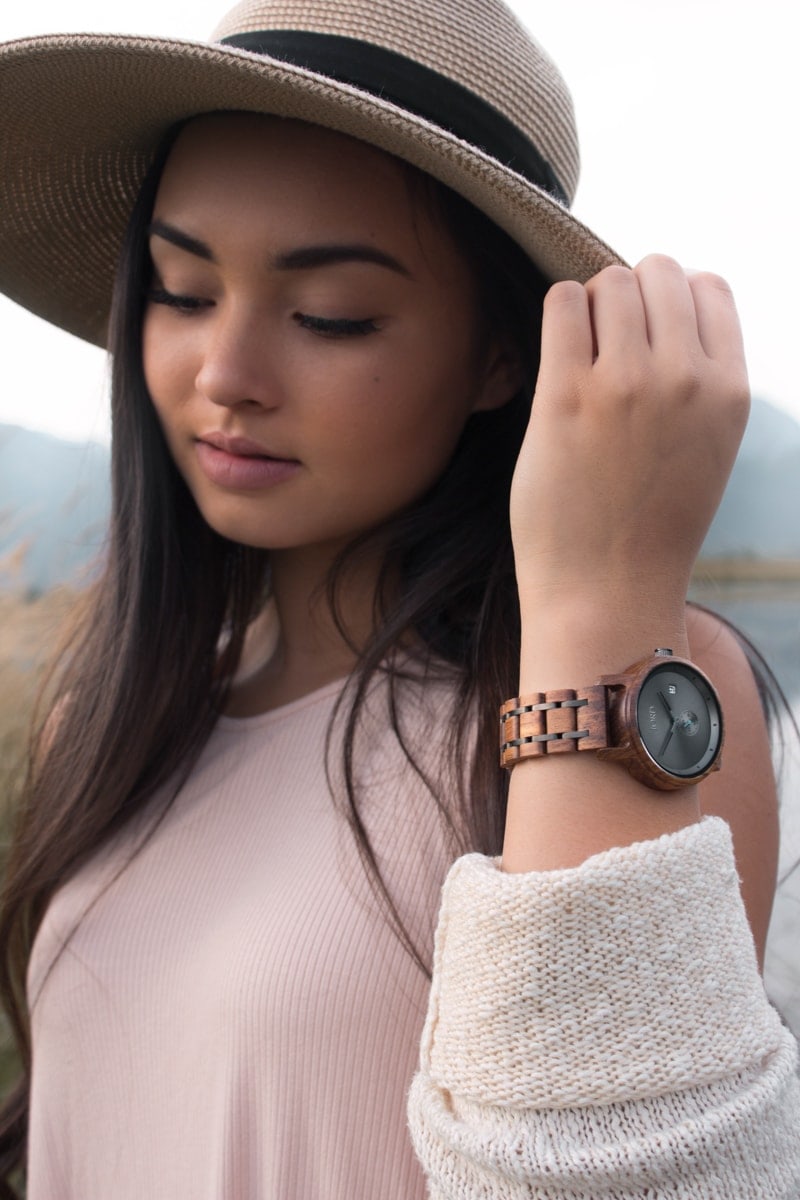
In regard to portraits in particular, this lens offers a diverse composition because of its ability to go from a 24mm wide-angle to a tight 70mm! However, this does cause a bit of optic distortion on the wider side, but it isn’t noticeable enough to cause a significant problem.
This mirrorless version of the lens featured excellent low-light performance despite the F/2.8 aperture (thanks to the very accurate and reliable autofocus system), fantastic image stabilization for slower shutter speeds, and brilliant weather-sealing. All in all, this is the best of the best when looking for a 24-70mm lens.
The price tag makes this lens challenging to afford for photographers that are just starting out. However, it is a worthwhile investment that can last the span of a career. Because of the versatility of this focal length, it would be frequently reached for in a camera kit.
Reasons To Buy:
- Excellent zoom range for an all-in-one portrait lens
- Great low-light performance
- Responsive and accurate autofocus
- Effective image stabilization for handheld shooting at slower shutter speeds
- Weather-sealed construction for outdoor shooting in harsh conditions
Reasons To Avoid:
- Expensive compared to other the EF 24-70mm lens
- Heavy and bulky design that may affect balance and handling
- No macro capability or close-focusing ability
Tips for Buying a Canon Portrait Lens

A few different factors determine the right Canon lens for you (specifically). Some are based on the practicality of the lens, such as pairing the right camera body with the correct lens mount. Others are based on your aesthetic and shooting ideology.
Consider Your Camera Body & Required Lens Mount
The best place to start is with your camera. Canon DSLR users should look for EF mount lenses exclusively, while Canon mirrorless photographers should seek RF mount lenses.
Although an adapter is available that converts an EF lens to an RF lens, this is best used if you are switching to mirrorless systems and already own DSLR lenses. Using a converter is adding a middle-man to the equation, which doesn’t always yield the most reliable results. As such, this really isn’t a practical option when investing in new equipment.
Next, be mindful of your camera sensor. Full-frame cameras can only utilize full-frame lenses, while crop sensor or APS-C cameras can use both full-frame lenses and those specially designed for the smaller sensor size.
Full-frame lenses alter the focal length when paired with a crop sensor. For example, a 50mm becomes a 75mm! This can change a lot about how the lens is used, such as your proximity to the subject in order to focus.
Choose A Lens That Matches Your Style And Needs
The final outcome of a photo is most heavily dependent upon the lens you use. The lens impacts the depth of field, sharpness, clarity, and perspective at which one captures photos. As such, picking a portrait lens that matches your style and needs is essential!
Photographers who favor shallow depths of field would do best with a prime lens due to the wider apertures. Shallow depth of field offers a lot of subject separation, a whimsical appearance, and more versatility in using less-than-ideal locations. However, studio photographers will prefer deep depths of field to ensure the entire subject is nicely in focus.
However, a photographer who enjoys capturing more candid moments can do well with a zoom lens due to its versatility. The 24-70mm is a good choice for this, allowing portraits to go from a wide field of view to a tight closeup with just the turn of the zoom ring.
Lenses that have longer focal lengths, such as the 85mm and 70-200mm, offer the benefit of optic compression, slightly slimming subjects and making proportions even more flattering. However, these lenses have a tight field of view and long focusing distance, requiring space to work well.
Wider lenses, such as the 35mm or 50mm, have much closer focusing distances and include more of the background within the shot but don’t have the same compression. These lenses create very dynamic and storytelling shots.
The type of portrait photographer you are or want to be will impact your lens choice.
Consider Your Budget Vs. Desired Outcome
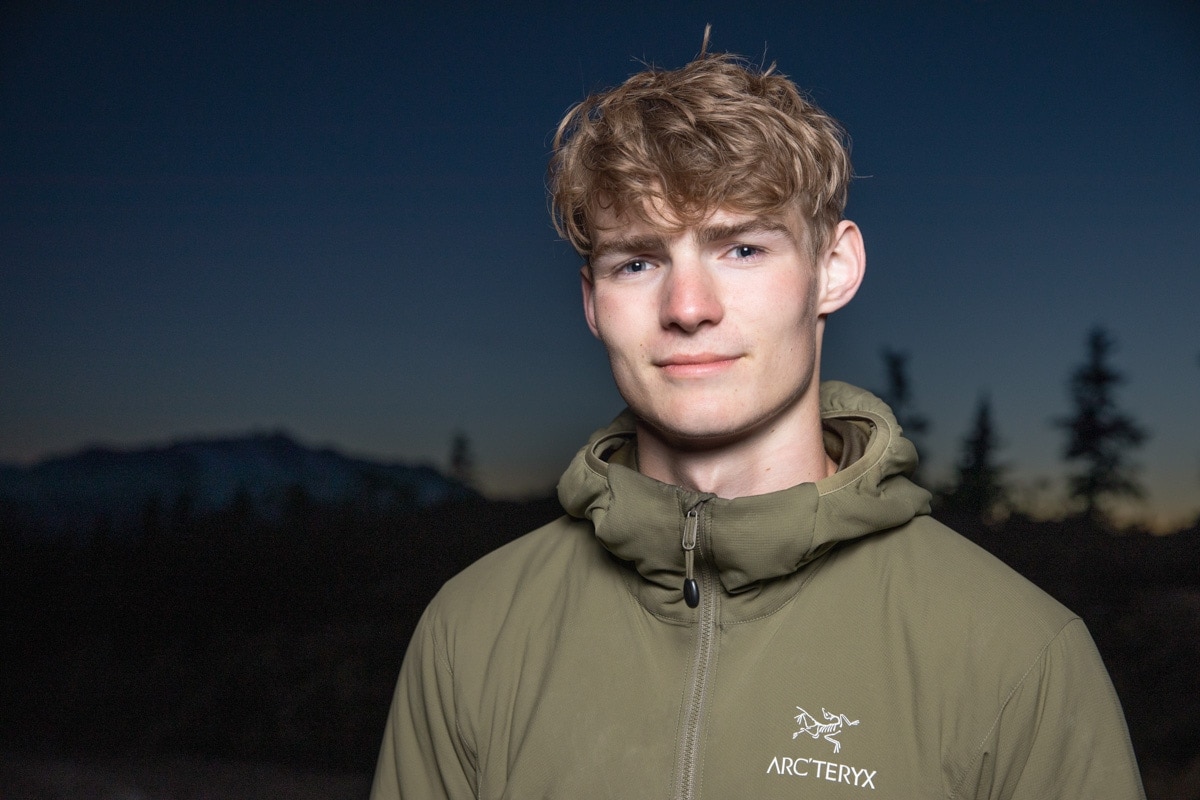
Everything boils down to budget at the end of the day, but with portrait lenses, finding a middle ground between something one can afford and the desired result is possible.
If you are a portrait photographer who doesn’t foresee much need for low-light captures, opting for lenses that do not have image stabilization can help cut some of the costs.
A shallow depth of field photographer would benefit greatly from an F/1.2 lens, but a similar bokeh effect can be created with an F/1.4 or F/1.8 lens as long as the subject is a decent distance away from their background and foreground. Narrower apertures tend to be more budget-friendly than wider ones. A photographer who takes deeper portraits, such as at F/8, would care less about shallow apertures.
A good way to think of expensive glass is how long such an investment will last you. Although high-end portrait lenses can average in the $2 000 – $3 000 range, they are built to last; divide this by the number of years of use you can get out of that lens, and the price tag no longer feels as significant.
Alongside this, portrait photography is one of the most significant niches in the photography space, with little shortage of work. An excellent-quality lens will take you far.
So Which Portrait Lens Should You Choose For Your Canon Camera?
Although lens selection can be a rather subjective choice as it depends on your shooting style, this list should help provide a few options! These are my top three picks:
- Best Zoom: Canon RF 24-70mm F2.8L IS USM or Canon EF 24-70MM f2.8L II USM
- Best Prime: Canon EF 85mm f/1.4L IS USM
- Best Budget: Canon EF 50mm f/1.8 STM
Portrait Lens Pick Summary
| Image | Product | Features | Price |
|---|---|---|---|
Best Overall  |
| Find On Amazon | |
Best Value  |
| Find On Amazon | |
Best Budget Option  |
| Find On Amazon | |
 |
| Find On Amazon | |
 |
| Find On Amazon | |
 |
| Find On Amazon | |
 |
| Find On Amazon | |
 |
| Find On Amazon | |
 |
| Find On Amazon | |
 |
| Find On Amazon |
